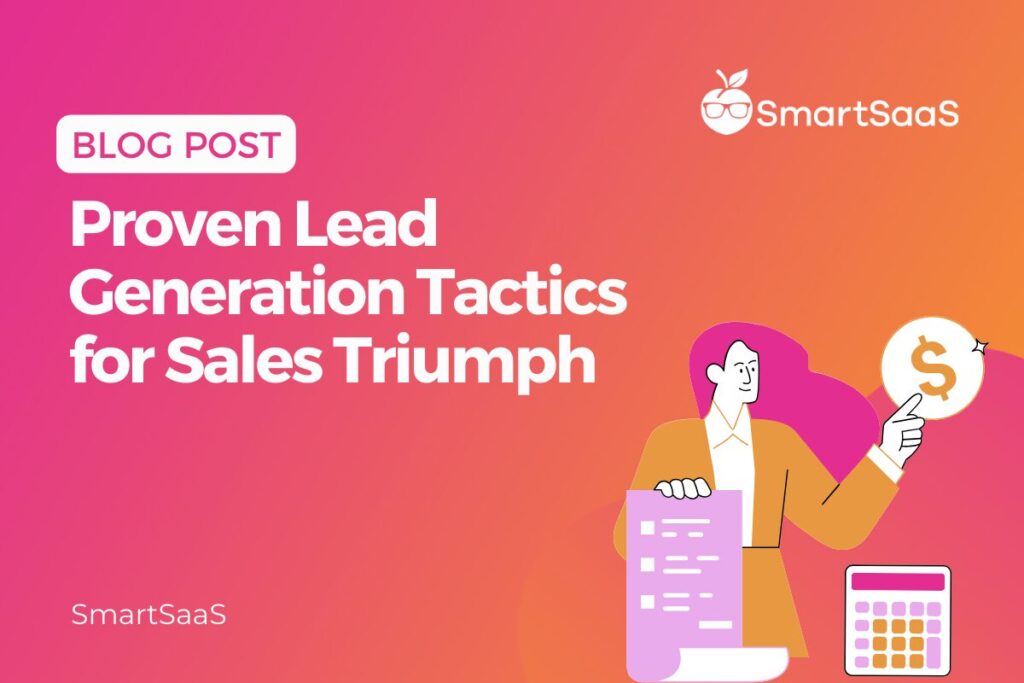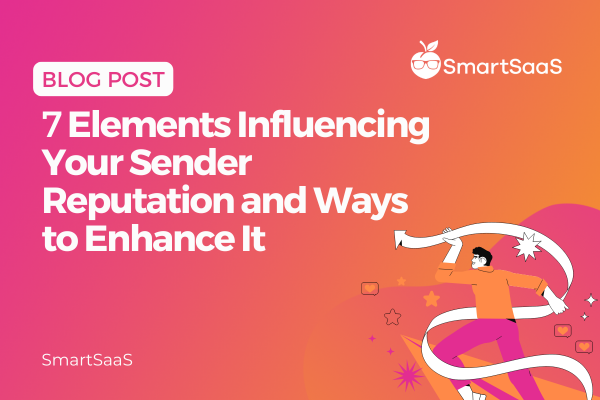Understanding Metrics for Email Deliverability

Are you worried that your cold outreach isn’t hitting prospects’ inboxes? You’re not alone. Understanding email deliverability is critical for businesses who lean on cold emailing to cultivate leads and generate sales.
In this post, we’ll highlight critical email deliverability metrics that you should be paying attention to. Whether you’re a CEO, an SDR, or a lone wolf, this post is for you.
Metrics Classification for Improved Sales Outreach
In sales outreach, cold email campaigns remain a popular and effective way to connect with potential clients. However, measuring the success of these campaigns requires a careful analysis of various metrics that can be categorized based on the specific aspects of user behavior they measure.
Dividing metrics into categories provides valuable insights into different facets of a cold email sales outreach campaign. This allows businesses and professionals to gain a comprehensive understanding of how their email campaigns are performing and identify areas for improvement.
Categories of Metrics
Let’s take a closer look at the different categories of metrics that can help businesses tailor their email campaigns for optimal success:
- Visibility Metrics: These metrics focus on the delivery of emails and whether they are making it to a recipient’s inbox. This can include bounce rates, spam reports, and unsubscribe rates.
- Recipient Insight Metrics: These metrics provide information about who is opening and engaging with emails. This includes open rates, click-through rates, and response rates.
- Engagement Metrics: These metrics measure the level of engagement with recipients beyond just opening an email. This can include metrics like time spent reading an email, forwarding rates, and conversion rates.
By segmenting metrics into these categories, businesses can gain a more focused analysis of user behavior and evaluate the effectiveness of their cold email campaigns. This enables a more targeted approach to optimizing email campaigns, as businesses can tailor their strategies based on the specific metrics they aim to improve.
Benefits of Categorization
Why is the categorization of metrics so crucial for sales outreach campaigns? Here are a few key benefits:
- Identifying areas for improvement: By analyzing specific categories of metrics, businesses can identify areas where their email campaigns may be falling short and focus on improving those areas.
- Optimizing strategies: With a more targeted approach to metrics analysis, businesses can tailor their systems for maximum impact and effectiveness.
- Increased success: By optimizing email campaigns based on specific categories of metrics, businesses can ultimately increase the success and effectiveness of their sales outreach efforts.
Overall, categorizing metrics for cold email sales outreach campaigns is an essential step in understanding the effectiveness of these campaigns and improving their impact on potential clients.
Visibility Metrics
Cold email sales outreach campaigns are a great way to reach potential customers and generate leads. However, to make your cold email campaign successful, you must track and analyze the visibility metrics that provide insights into how recipients deliver, open, and engage your emails.
Deliverability Rate
The deliverability rate measures the percentage of emails that successfully reach recipients’ inboxes. It is an essential metric that helps you gauge the effectiveness of your email delivery. A high deliverability rate ensures that the right people see your messages and have the opportunity to generate leads or conversions.
Bounce Rate
The bounce rate measures the percentage of emails not delivered to recipients for various reasons, such as invalid email addresses or entire mailboxes. A high bounce rate can indicate issues with your email list quality or technical problems with the email server. You can identify and address any problems hindering your email delivery by monitoring the bounce rate.
Open Rate
The open rate measures the percentage of recipients who open your emails. It answers the effectiveness of your subject lines, email preview text, and sender name in capturing recipients’ attention. A higher open rate indicates that your emails are compelling and engaging, increasing the chances of recipients taking further action.
Click-through Rate
The click-through rate (CTR) measures the percentage of recipients who click on links within your emails. It indicates the level of engagement and interest generated by your email content. A higher CTR suggests that your emails provide value and motivate recipients to take desired actions, such as visiting your website, downloading resources, or purchasing.
By tracking and analyzing these visibility metrics, you can assess the overall performance of your cold email sales outreach campaign. These metrics help you understand how effectively recipients deliver, open, and engage your emails. By optimizing each metric, you can improve the visibility and impact of your emails, ultimately leading to more successful sales outreach efforts.
Therefore, it is essential to track these metrics regularly and make necessary changes to improve the performance of your cold email sales outreach campaign. By doing so, you can increase the effectiveness of your emails and generate more leads and conversions for your business.
Recipient Insight Metrics
Cold email sales outreach can be a highly effective way to reach new prospects and generate leads. However, to ensure your email campaigns are successful, it’s crucial to analyze specific metrics that provide valuable insights into user behavior and email performance.
By monitoring these metrics closely, you can identify areas for improvement, optimize your cold email sales outreach strategy, and enhance your email deliverability, engagement, and, ultimately, your success in reaching your target audience.
Hard Bounce Rate
The hard bounce rate measures the percentage of emails not delivered due to permanent issues, such as invalid or nonexistent email addresses. A high hard bounce rate indicates a problem with your email list quality or targeting, and it’s crucial to regularly clean and update your email database to minimize bounces.
Soft Bounce Rate
Unlike hard bounces, soft bounces occur due to temporary issues like a full inbox or a server being down. Monitoring the soft bounce rate helps you identify potential delivery issues and take necessary action, such as contacting recipients to update their contact information.
Rejected Rate
The rejected rate tracks the percentage of emails the recipient’s email server rejects. It can be caused by various factors, including a poor sender reputation, improper email authentication, or content-triggering spam filters. Monitoring the rejected rate helps you identify and resolve any email delivery issues.
Complaint Rate
The complaint rate measures the number of recipients who mark your emails as spam or report them as unwanted. A high complaint rate can negatively impact your sender’s reputation and email deliverability. It’s essential to closely monitor this metric, ensure your emails comply with anti-spam regulations, and provide clear unsubscribe options.
Spam Trap Hit Rate
Spam traps are email addresses used to identify and catch spammers. If your emails hit spam traps, it indicates potential issues with your email acquisition methods or list hygiene. Monitoring the spam trap hit rate helps you identify and eliminate problematic email addresses or sources.
Inbox Placement Rate
The inbox placement rate measures the percentage of emails that successfully land in recipients’ inboxes. It provides valuable insights into the overall deliverability of your emails. A higher inbox placement rate indicates better email deliverability and increased chances of engagement and conversions.
Spam Placement Rate
On the other hand, the spam placement rate measures the percentage of emails classified as spam and sent to recipients’ spam folders. A high spam placement rate indicates potential issues with your email content, sender reputation, or authentication. It’s crucial to optimize your email content and adhere to best practices to avoid getting marked as spam.
By closely monitoring these metrics, you can make data-driven decisions about improving your cold email sales outreach strategy. With the right approach, you can increase your email deliverability, engagement, and, ultimately, your success in reaching your target audience.
Engagement Metrics
Engagement metrics are crucial when measuring the success and effectiveness of your cold email sales outreach. These metrics provide valuable insights into how recipients interact with your emails and indicate their interest and engagement level. By analyzing engagement metrics, you can understand the effectiveness of your email content, calls to action, and overall campaign performance. Here are some key engagement metrics to consider:
Read Rate
The read rate measures the percentage of recipients who open and read your email. It gives you an indication of how compelling and engaging your subject line and email content are. A higher read rate suggests that your emails capture recipients’ attention and entice them to explore further.
Deleted Before Reading Rate
This metric tracks the percentage of recipients who delete your email without opening or reading it. A high delete-before-reading rate could indicate that your subject line needs to be enticing more or that your emails are perceived as irrelevant or uninteresting. Monitoring this metric can help refine your subject lines and ensure your emails are more enticing and relevant to your target audience.
This Is Not Spam Rate
This metric measures the number of recipients who manually mark your email as “Not Spam” after it lands in their spam folder. It reflects the accuracy of your email filtering and deliverability and the recipient’s level of interest in your content. A higher “This Is Not Spam” rate indicates that recipients find value in your emails and actively want to receive them.
Unique Clicks and Open Rate
The unique clicks and open rate metric provides insights into how many recipients open your emails and take further action by clicking on links within the email. It helps gauge the level of engagement and interest in your content. By tracking unique clicks and open rates, you can assess the effectiveness of your call-to-action buttons and links, as well as the overall engagement of your audience.
Unsubscribe Rate
The unsubscribe rate measures the percentage of recipients who opt out or unsubscribe from your email list after receiving your email. While it may seem counterintuitive, monitoring the unsubscribe rate is essential to understand the relevancy and value of your emails to your audience. A high unsubscribe rate may indicate that your content needs to meet your subscribers’ expectations, and adjustments may be needed to improve engagement and retention.
By closely monitoring these engagement metrics, you can gain valuable insights into how recipients interact with your cold email sales outreach. These metrics help you understand the effectiveness of your email content, identify areas for improvement, and tailor your email campaigns to engage better and resonate with your target audience. Optimizing engagement metrics can enhance the success and impact of your cold email sales outreach efforts.
To Wrap Up
Monitoring and improving your email deliverability is vital to the success of your email marketing campaigns. By maximizing reach and engagement, protecting your sender reputation, and identifying and resolving issues promptly, you can increase the effectiveness of your cold emailing efforts and drive better results for your business.
Related Content in Our Marketplace
-
Mastering Startup Revenue Growth: Sales and Marketing Bootcamp
-
High Email Deliverability Checklist
-
Email Deliverability Cheat Sheet
-
Spam Filter & Deliverability Checklist
-
Email deliverability Guide: Setting-Up SPF, DKIM & DMARC
-
Email Quality Assurance Guide with Checklist






Responses